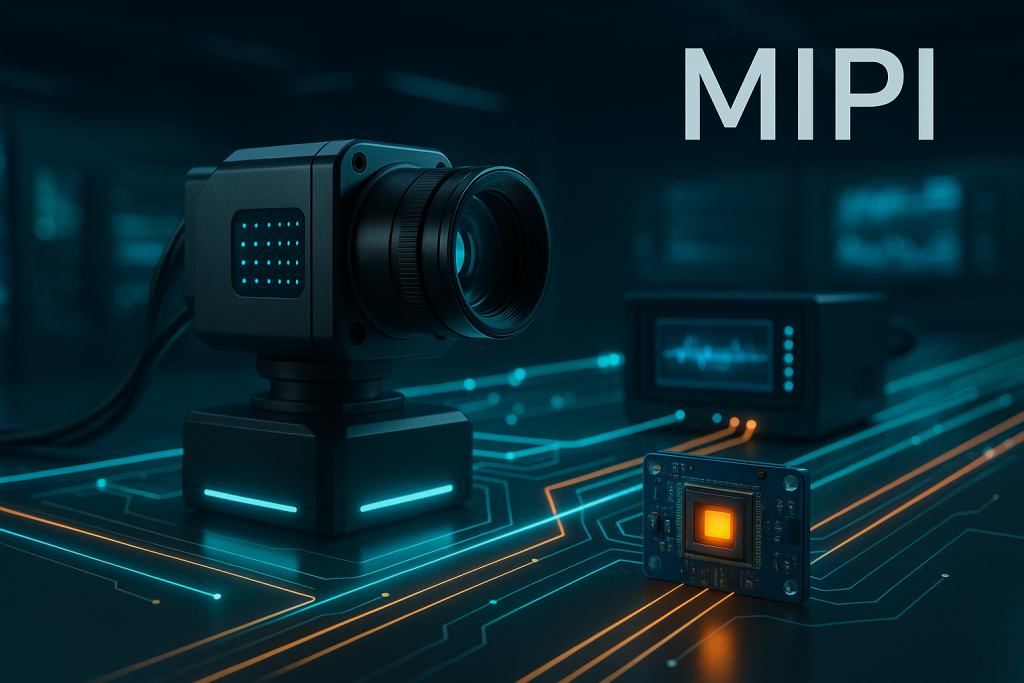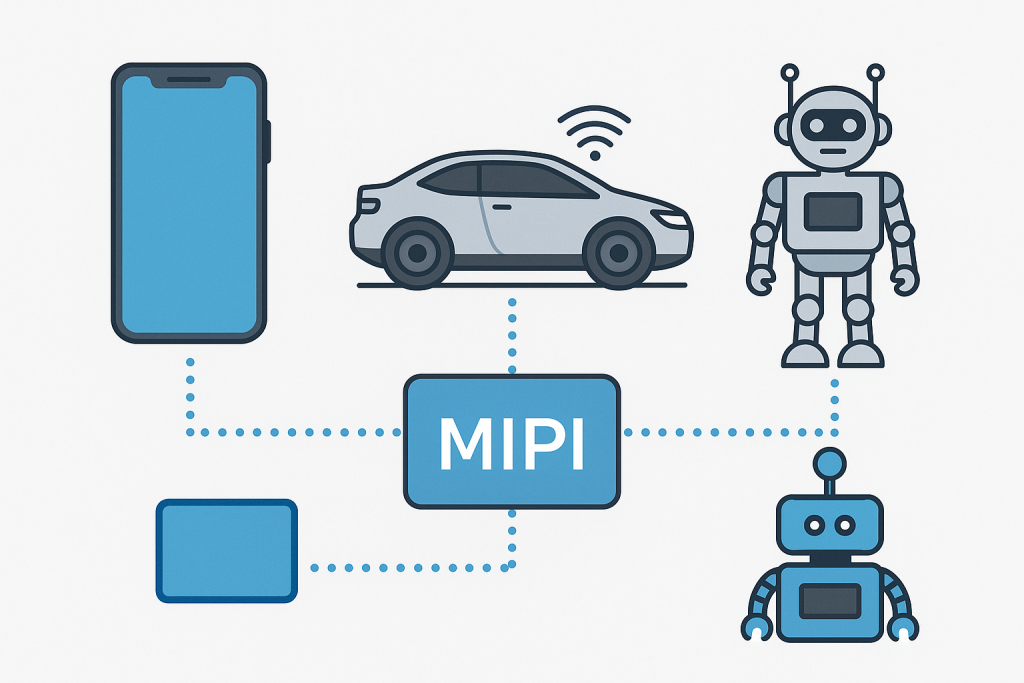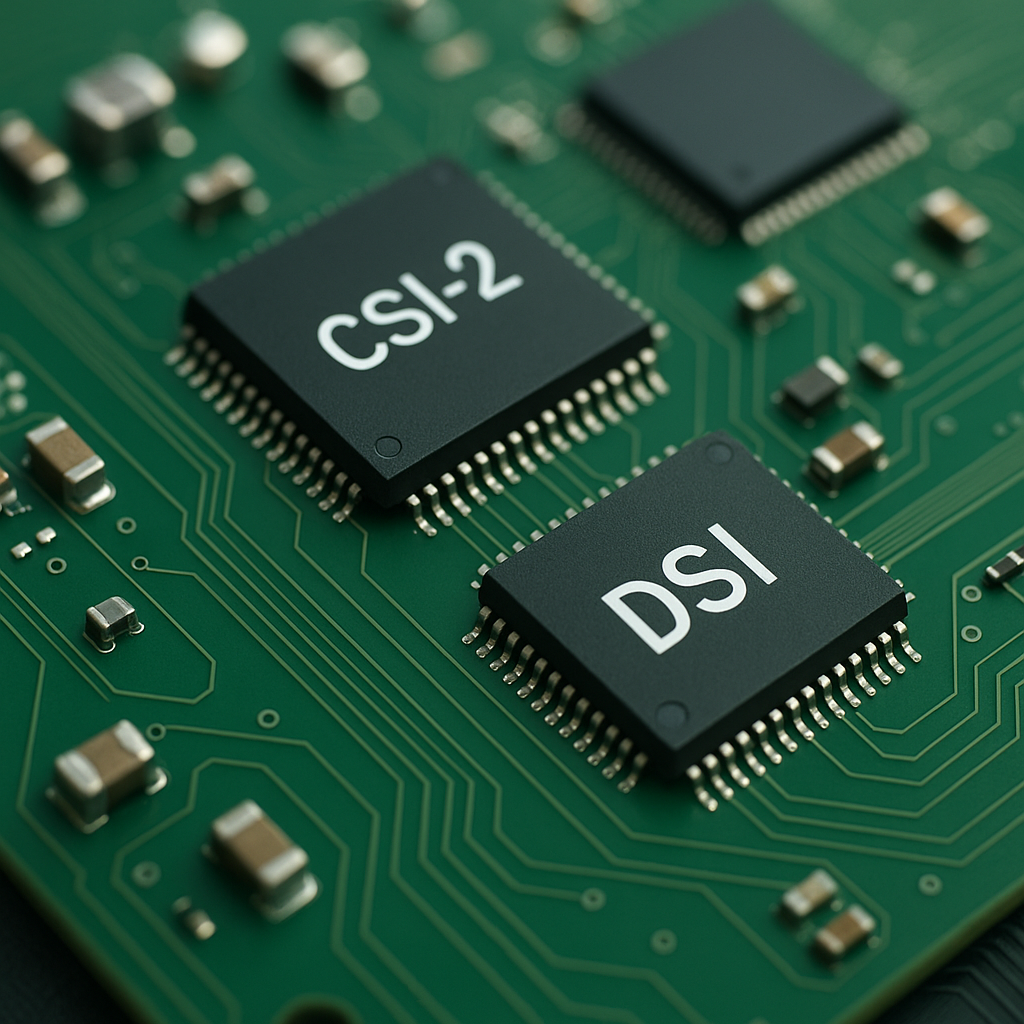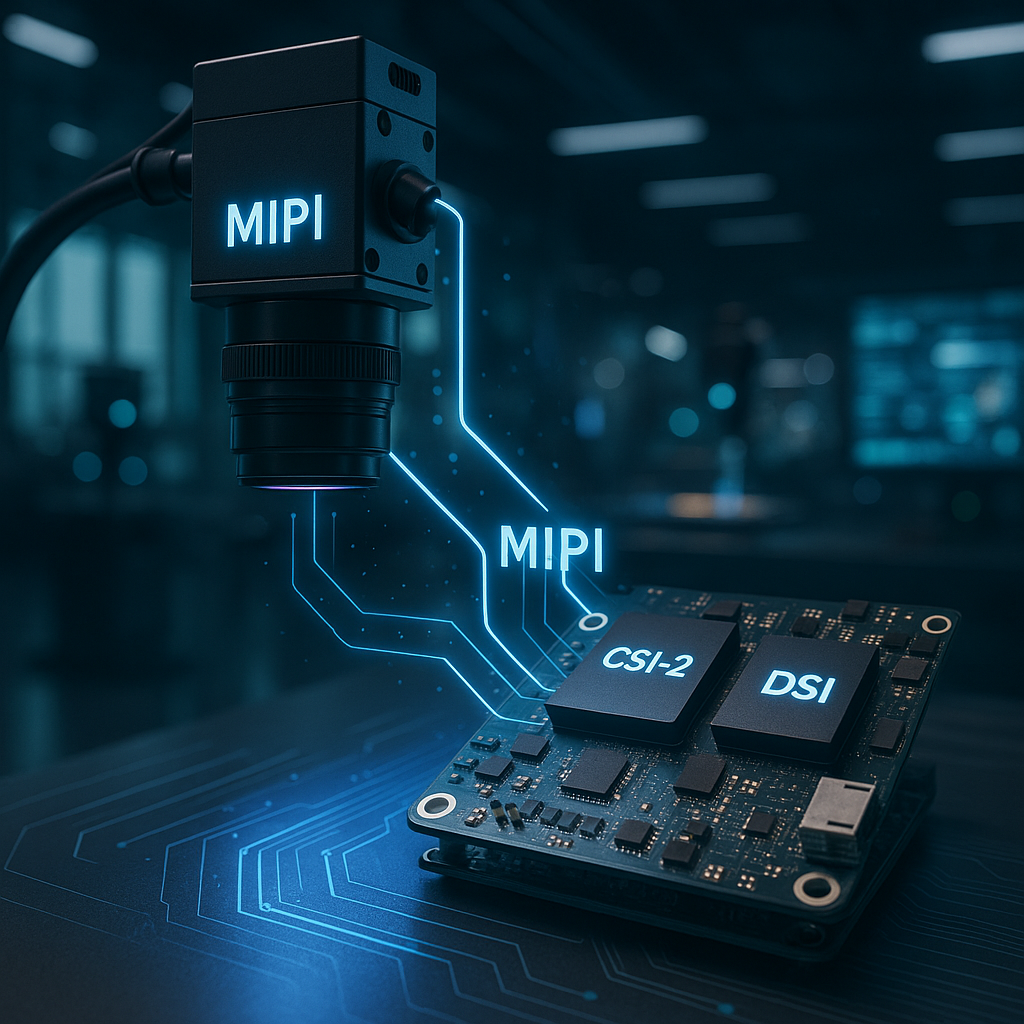
Machine vision is advancing fast.
And at the heart of this transformation is MIPI – a key protocol powering the next generation of intelligent visual systems.
In this article, you’ll discover how MIPI enables smarter, faster, and more efficient machine vision applications across industries like healthcare, automotive, and security.
Introduction: What Is MIPI and Why It Matters
MIPI (Mobile Industry Processor Interface) is a family of high-speed interface protocols.
It was originally designed for mobile devices, but now it’s transforming how cameras and displays connect in embedded systems.
From smartphones to self-driving cars, MIPI makes systems smaller, more efficient, and powerful.

Key Benefits of MIPI in Machine Vision
1. High-Speed and Scalable Performance
MIPI protocols such as CSI-2 (Camera Serial Interface) and DSI (Display Serial Interface) are built for high-speed communication.
These are crucial for modern, high-resolution cameras.
And they’re scalable—you can use multiple lanes to boost data flow without adding bulk.
2. Compact and Energy-Efficient Design
In compact systems like wearables or embedded vision sensors, space is everything.
MIPI shines here too.
It reduces the number of pins and physical lines required.
Plus, it’s low power—perfect for battery-operated devices.
3. Backward Compatibility & Embedded Clocking
New upgrades? No problem.
MIPI protocols are backward compatible, meaning easier integration with existing systems.
And with embedded clocking, you need fewer wires—helping maintain signal quality at higher speeds.

Real-World Applications of MIPI
Automotive Industry
From ADAS (Advanced Driver Assistance Systems) to infotainment:
- CSI-2 connects multiple cameras in surround-view systems
- DSI handles high-resolution dashboards
- A-PHY supports long-distance, high-speed data transfer inside vehicles
Medical Devices
In healthcare, MIPI is found in:
- Portable ultrasound and diagnostic equipment
- Patient monitoring tools
- Imaging sensors using CSI-2
- Sensor connections using I3C
Security and Surveillance
Modern surveillance tools rely on MIPI for:
- High-quality video capture in smart cameras
- Efficient data transmission from doorbell cams to control centers

FAQ: Everything You Need to Know About MIPI
Q1: What is MIPI and why is it important in machine vision?
A: MIPI is a group of high-speed interface protocols that support low-power, compact, and scalable data transfer. It’s crucial for connecting cameras and displays in modern vision systems.
Q2: Can MIPI be used in cars and healthcare devices?
Yes. MIPI is widely adopted in automotive and medical imaging technologies.
Q3: Which MIPI protocols are used in cameras?
CSI-2 is commonly used for camera connectivity.
Q4: Is MIPI expensive to implement?
No. Its compact design and backward compatibility make it cost-efficient.
Q5: Is MIPI suitable for IoT devices?
Absolutely. MIPI is lightweight and power-efficient—ideal for IoT applications.
Conclusion: The Future Is MIPI-Powered
MIPI is driving the evolution of machine vision across industries.
Its mix of speed, efficiency, and scalability makes it a must-have in any advanced visual system.
Whether you’re building cameras, medical tools, or automotive interfaces—MIPI ensures you’re ready for the future.

Recent Comments